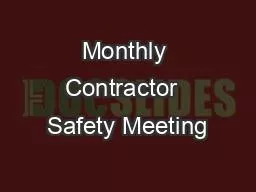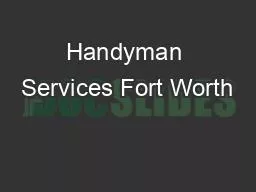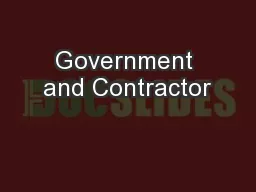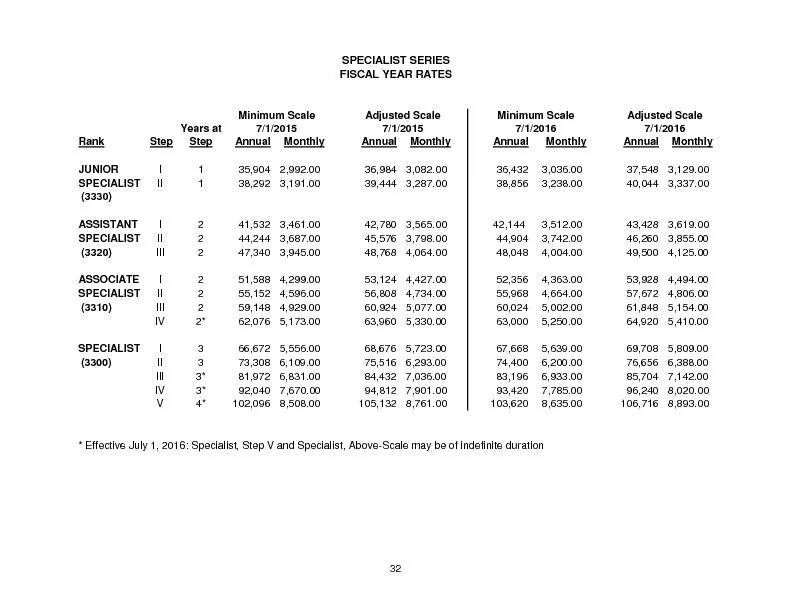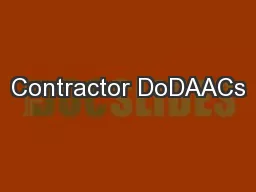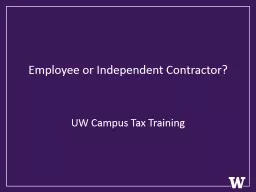PPT-Monthly Contractor Safety Meeting
Author : loaiatdog | Published Date : 2020-08-27
November 2017 2 Facilities Emergency Exits Cell Phones Safety Share This months focus Special Presentation by John Crimmin from Transco Branch Safety Performance
Presentation Embed Code
Download Presentation
Download Presentation The PPT/PDF document "Monthly Contractor Safety Meeting" is the property of its rightful owner. Permission is granted to download and print the materials on this website for personal, non-commercial use only, and to display it on your personal computer provided you do not modify the materials and that you retain all copyright notices contained in the materials. By downloading content from our website, you accept the terms of this agreement.
Monthly Contractor Safety Meeting: Transcript
Download Rules Of Document
"Monthly Contractor Safety Meeting"The content belongs to its owner. You may download and print it for personal use, without modification, and keep all copyright notices. By downloading, you agree to these terms.
Related Documents

